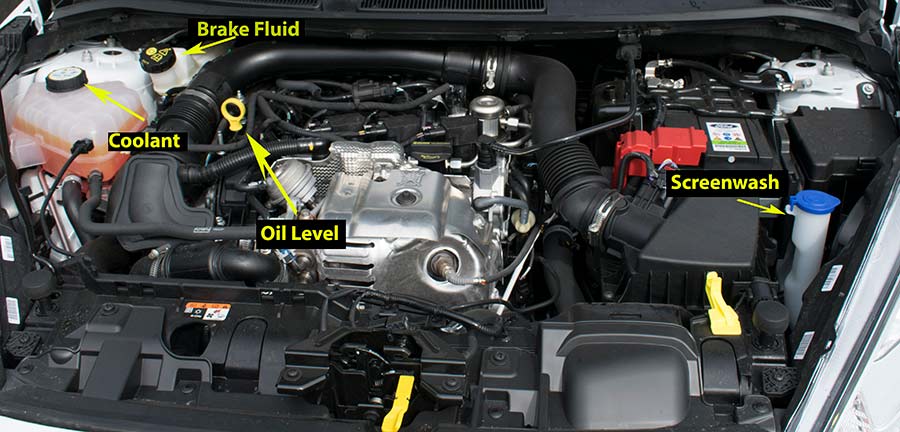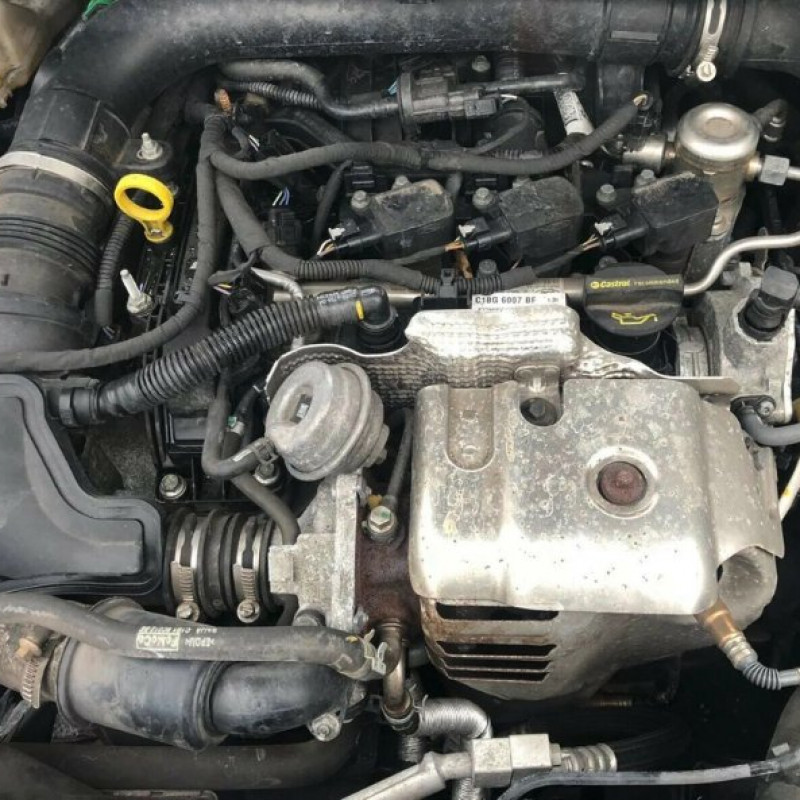Upgrade Your Ford Fiesta Engine for Better Fuel Economy and Power
Upgrade Your Ford Fiesta Engine for Better Fuel Economy and Power
Blog Article
The Future of Engines: Developments Driving Lasting Power Solutions
As the automobile sector navigates the critical transition in the direction of sustainability, the future of engines is significantly specified by groundbreaking developments. Electric engine innovations, along with appealing advancements in hydrogen gas cells and biofuels, are improving the landscape of power solutions.
Electric Engine Developments
The evolution of electrical engine growths indicates a pivotal shift in the aerospace and automotive industries, driven by the urgent need for lasting choices to fossil gas. This change is identified by substantial innovations in battery modern technology, power electronic devices, and electrical motor style, which collectively improve the effectiveness and performance of electrical engines.
Current advancements have resulted in the creation of lighter, more energy-dense batteries, such as lithium-silicon and solid-state batteries, which assure longer arrays and shorter charging times. Additionally, renovations in electrical motor efficiency, such as using permanent magnets and advanced cooling systems, enable electric engines to operate effectively under differing conditions. These enhancements not just enhance car efficiency however likewise add to a decrease in overall power usage.
Furthermore, the assimilation of advanced software application formulas has actually optimized power administration in electric automobiles, allowing for regenerative stopping and predictive billing approaches. As makers increasingly embrace electrical propulsion, the aerospace and automotive fields are observing a standard shift towards greener modern technologies. This evolution not just satisfies regulative demands however likewise lines up with customer preferences for eco-friendly transport services, solidifying electrical engines as a keystone of future lasting flexibility.
Innovations in Biofuels
As the auto and aerospace industries increasingly prioritize lasting power sources, advancements in biofuels become a corresponding option to electric engines. Biofuels, stemmed from organic materials such as crops, waste, and algae, present an ingenious method for reducing greenhouse gas discharges and dependence on fossil gas.
Recent research study has actually focused on boosting the efficiency and sustainability of biofuel production. Second-generation biofuels make use of non-food feedstocks, minimizing competitors with food supply and decreasing environmental influence. Furthermore, innovations in synthetic biology have actually enabled the design of microorganisms to generate biofuels more properly, resulting in higher yields and reduced production costs.
Furthermore, the advancement of drop-in biofuels enables seamless combination right into existing infrastructure, making it possible for a smoother shift for markets commonly depending on nonrenewable fuel sources. ford fiesta engine. These fuels can be utilized in present engines without adjustments, facilitating their adoption across different markets
Investments in biofuel modern technology, in addition to encouraging plans, are important to drive technology and scalability. As the international neighborhood seeks to combat environment modification, biofuels provide a pragmatic, prompt option that lines up with the overarching goal of sustainability in transportation and air travel.
Hydrogen Fuel Cell Modern Technology
An expanding number of scientists and business are exploring hydrogen gas cell innovation as a viable choice to traditional source of power in transport and energy systems. This technology transforms chemical energy from hydrogen right into power via an electrochemical reaction, with water as the only byproduct, making it an eco-friendly alternative.
The core of hydrogen fuel cells is the gas cell pile, where hydrogen molecules are split into protons and electrons. The flow of electrons produces power, while protons relocate with a membrane to combine with oxygen from the air, forming water. This process results in high efficiency and reduced exhausts, placing hydrogen gas cells as an essential gamer in the transition to lasting power.
Considerable developments have actually been made in boosting the durability and performance of gas cells, along with minimizing costs through innovative production strategies. Additionally, the advancement of hydrogen manufacturing approaches, such as electrolysis powered by renewable energy sources, boosts the sustainability of the general system. As infrastructure for hydrogen refueling expands and production techniques end up being more effective, hydrogen gas cell technology her explanation holds wonderful promise for decarbonizing different fields, including durable transportation and stationary power generation.
Crossbreed Systems and Their Influence
Hybrid systems represent a considerable development in sustainable engine technology, combining standard interior combustion engines with electric propulsion to maximize power effectiveness and decrease emissions (ford fiesta engine). This twin strategy enables cars to utilize both source of power, allowing greater flexibility in energy intake and lowering dependence on nonrenewable fuel sources

Along with ecological benefits, hybrid systems offer customers a feasible shift towards totally electrical cars. They minimize array stress and anxiety by integrating the convenience of fuel with the benefits of electric propulsion, making them an eye-catching alternative for a larger audience. As makers invest in hybrid innovation, the growth of advanced battery systems and light-weight materials proceeds to improve efficiency. Generally, hybrid systems stand for a critical step in the direction of accomplishing try these out lasting transportation and addressing the immediate need for eco friendly power remedies.
The Role of AI in Engine Style
Leveraging sophisticated algorithms and machine discovering techniques, the automobile sector is increasingly integrating man-made knowledge (AI) right into engine design processes. AI improves the performance and effectiveness of design by evaluating substantial datasets to determine optimum configurations and performance criteria. This capacity enables designers to replicate numerous operating problems and forecast engine behavior under multiple scenarios, substantially minimizing the time and expense connected with conventional prototyping techniques.
Moreover, AI helps with the advancement of advanced materials and burning procedures customized for sustainability. By optimizing fuel effectiveness and decreasing discharges, AI-driven styles line up with worldwide efforts targeted at decreasing the carbon footprint of automobile engines. Artificial intelligence algorithms can also predict upkeep demands, causing enhanced dependability and longevity of engine components.
Moreover, AI is crucial in the assimilation of electrification innovations, such as hybrid systems, where it can optimize battery monitoring and power healing processes. As the sector relocates towards more lasting power options, the function of AI in engine design becomes increasingly essential, driving technology and improving the performance of future engines. look at here now Ultimately, the cooperation in between AI and engine style heralds a brand-new period of smarter, cleaner, and extra reliable automotive technologies.

Verdict
Finally, the future of engines is being formed by a merging of ingenious innovations that prioritize sustainability. Electric engine innovations, biofuel developments, hydrogen fuel cells, and crossbreed systems collectively add to a substantial reduction in discharges and ecological impact. Furthermore, the assimilation of expert system in engine style enhances efficiency and performance. These transformative services highlight a dedication to developing a cleaner, more sustainable vehicle landscape, inevitably benefiting both society and the setting.
Electric engine developments, together with promising developments in hydrogen gas cells and biofuels, are improving the landscape of power remedies. In addition, renovations in electrical motor effectiveness, such as the use of long-term magnets and advanced cooling down systems, allow electric engines to operate efficiently under varying conditions. By enhancing gas effectiveness and decreasing emissions, AI-driven designs straighten with global initiatives intended at reducing the carbon footprint of auto engines. As the sector moves in the direction of even more lasting power remedies, the duty of AI in engine layout ends up being progressively vital, driving development and improving the performance of future engines. Electric engine developments, biofuel growths, hydrogen gas cells, and hybrid systems collectively add to a substantial decrease in discharges and ecological influence.
Report this page